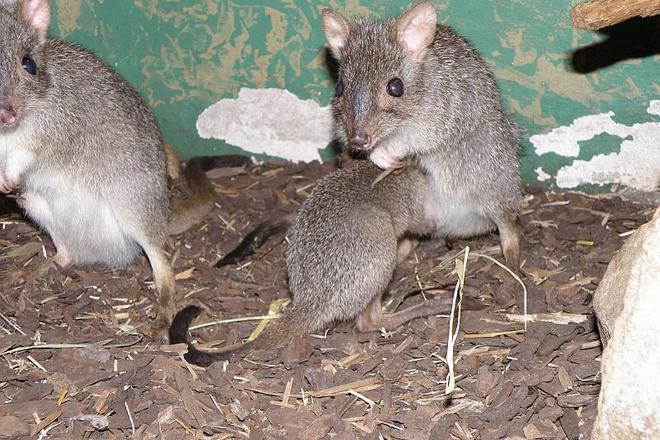THE WOYLIE (Bettongia penicillata) is a small, 30-centimetre-long marsupial belonging to the Potoridae family which is also known as the brush-tailed bettong. Bratislava Zoo is the first and only zoo in Slovakia to successfully breed these small animals, which look something like a cross between a rat, a kangaroo and a rabbit. Bratislava Zoo considers the birth of its first woylie, born in November 2009, to have been an enormous success and on February 18 the young offspring left its mother’s pouch.
The woylie typically moves by hopping, as is typical for kangaroos, wrote the TASR newswire giving its source as www.zoobratislava.sk. A woylie has grey-brownish hair, lighter on the belly, typically a long nose, and small rounded ears. Its average body length including the head is 28-40 centimetres and its average weight is 1.3 kilograms. The tail is 21-36 centimetres long on average, is nearly hairless and is used as a rudder while hopping. But the tail is mainly interesting because of the animal’s ability to grip items with it and bring them – mostly bundles of nesting material, such as grass or leaves – to its nest on the ground, TASR wrote.
Bratislava Zoo acquired two female woylies from Prague Zoo in 2005 and a male from Duisburg Zoo in Germany in 2009. Originally, this animal inhabited the forests of south-eastern Australia. In its natural habitat the woylie does not drink water or eat green plants but lives mainly on sap from underground fungi that grow on the roots of eucalyptus and other trees and also on tubers, natural resin of the Hakea shrub, and insects.
Woylies are nocturnal animals and prefer solitude. There are no visible differences between male and female woylies and they meet mainly during mating time and males control their territory so that they know when females are ready.
Males are aggressive towards other males and can kick using strong hind limbs; females which are not in mating season are aggressive towards males that harass them. Mating takes place at night and lasts for just a few seconds but is repeated several times; females mate with several males.
The woylie is on the IUCN (International Union for Conservation of Nature) Red List of critically endangered species. Its population in Australia has recently been declining steeply for several reasons: destruction of its natural habitat; non-native species being introduced to its homeland; and an infestation of parasites.


 Dreaming of Oz: a baby seeks protection and sustenance in its mother's pouch. (source: Courtesy of Zoo B.)
Dreaming of Oz: a baby seeks protection and sustenance in its mother's pouch. (source: Courtesy of Zoo B.)